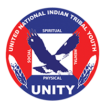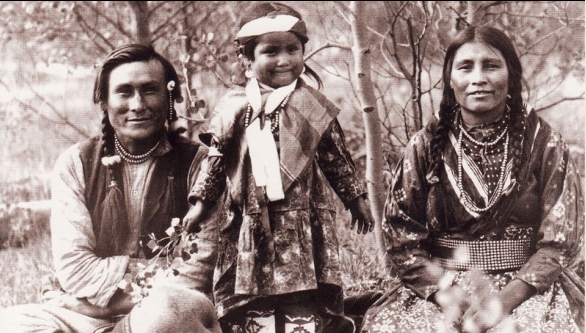 UNITY Earth Ambassadors share 10 Ways they are Honoring the Earth. Here are some examples of their conservation habits, efforts and Earth Day Projects.
UNITY Earth Ambassadors share 10 Ways they are Honoring the Earth. Here are some examples of their conservation habits, efforts and Earth Day Projects.
- Plant a Garden
- Tree Planting
- Compost
- Recycle
- Eat less meat
- Water conservation
- Zero Waste/reduce waste
- Raise Awareness-Start a Podcast or Become a Vlogger
- Honor your Ancestors – Learn about your tradtional foods, culture and language
- Share and teach why and how to honor the Earth
Mary Kim Titla, UNITY Executive Director, San Carlos Apache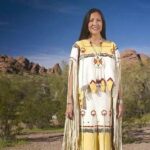 – Our family is diligent when it comes to recycling and the fact our city offers a recycling pick up is helpful. I compost on a small scale, mostly coffee grounds and eggshells. My personal favorite is plant conservation. We have a variety of plants and trees around our home including bougainvillea bushes, lemon and orange trees, which we care for. I’ve recently planted aloe vera and spring flowers. On Earth Day, with my grandchildren, I plan to plant a pine tree.
– Our family is diligent when it comes to recycling and the fact our city offers a recycling pick up is helpful. I compost on a small scale, mostly coffee grounds and eggshells. My personal favorite is plant conservation. We have a variety of plants and trees around our home including bougainvillea bushes, lemon and orange trees, which we care for. I’ve recently planted aloe vera and spring flowers. On Earth Day, with my grandchildren, I plan to plant a pine tree.
Earth Ambassador, Jeida DeZurney, Siletz –  It’s not so much “unusual”, but I use cloth makeup wipes instead of cotton rounds or the packaged makeup wipes. My Earth Day project is creating a pamphlet that explains how to start and take care of a home native plant garden out of recycled material youth have in the house. I would also have it laminated so youth can bring it outside while planting and in any weather condition. I would later send them out and provide a starter up kit of seeds if youth do not have access to them in person.
It’s not so much “unusual”, but I use cloth makeup wipes instead of cotton rounds or the packaged makeup wipes. My Earth Day project is creating a pamphlet that explains how to start and take care of a home native plant garden out of recycled material youth have in the house. I would also have it laminated so youth can bring it outside while planting and in any weather condition. I would later send them out and provide a starter up kit of seeds if youth do not have access to them in person.
 UNITY Project Coordinator, Joshua Tso, Diné – Our family is very water conscious. We limit our use of water, shortening our showers, and we are evening switching our yard to desert landscape. We have family who still pump and haul water on the reservation. Being conscious of water in the desert is vital to the region, and something that more people should be aware of as well.
UNITY Project Coordinator, Joshua Tso, Diné – Our family is very water conscious. We limit our use of water, shortening our showers, and we are evening switching our yard to desert landscape. We have family who still pump and haul water on the reservation. Being conscious of water in the desert is vital to the region, and something that more people should be aware of as well.
Earth Ambassador, Zunneh-bah Martin, Diné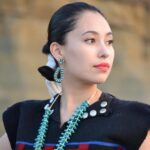 – One of my late elders had a sign in his home restroom that said “If it’s mellow, let it mellow. If it’s brown, flush is down.” For a while now, my family and I have been following this in our own home to save water by flushing the toilet less often. It’s not unusual to me personally, but I know it’s unusual to others and is not a common practice. Even using “out houses” (which are similar to composting toilets) may seem unusual to those who didn’t grow up using them, but many of my relatives who do not have running water still use them.
– One of my late elders had a sign in his home restroom that said “If it’s mellow, let it mellow. If it’s brown, flush is down.” For a while now, my family and I have been following this in our own home to save water by flushing the toilet less often. It’s not unusual to me personally, but I know it’s unusual to others and is not a common practice. Even using “out houses” (which are similar to composting toilets) may seem unusual to those who didn’t grow up using them, but many of my relatives who do not have running water still use them.
UNITY Program Manager, LorenAshley Buford,Yamasee –  According to the UN Climate Change Report eating less meat is a great way to cut down on your environmental impact. Our family has started a small farm on our land over the past three years. It is important for my nieces and nephews to learn the importance of taking care of free range animals and processing our own meat. The responsibility teaches our youth to respect the animals, land and food sovereignty. Something as simple as collecting eggs can have an impact on their future choices. Not many people know that “livestock farming contributes 18% of human produced greenhouse gas emissions worldwide.” By eating less manufactured meat, we are teaching future generations how to be more sustainable.
According to the UN Climate Change Report eating less meat is a great way to cut down on your environmental impact. Our family has started a small farm on our land over the past three years. It is important for my nieces and nephews to learn the importance of taking care of free range animals and processing our own meat. The responsibility teaches our youth to respect the animals, land and food sovereignty. Something as simple as collecting eggs can have an impact on their future choices. Not many people know that “livestock farming contributes 18% of human produced greenhouse gas emissions worldwide.” By eating less manufactured meat, we are teaching future generations how to be more sustainable.
Earth Ambassador, Marco Orvando, Shoshone-Paiute –  Our ancestors understood the intricate relationship with all living beings and how to only take what is needed and nothing more. I want to follow that example and tradition but only using what I truly need and nothing more to help eliminate excess waste that pollutes and harms our mother even more.
Our ancestors understood the intricate relationship with all living beings and how to only take what is needed and nothing more. I want to follow that example and tradition but only using what I truly need and nothing more to help eliminate excess waste that pollutes and harms our mother even more.
My Earth Day project is a DIY garden display in front of the Owyhee Combined Schools that consists of traditional plants found in the area. It resembles the much larger project the Shoshone-Paiute Tribes is currently undertaking raising seedlings in the school’s greenhouses to be replanted in the ecosystem to speed up wildfire recovery efforts. There are currently two rocky patches of soil that are in the front of school parking lot that could be utilized and beautified to represent the landscape around it.Plants like manzanita, juniper, sagebrush, sage, rabbitbrush, Indian ryegrass, and antelope bitterbrush; and all are extremely hardy plants used by the Shoshone and Paiute for medicine, tools, etc. These plants are also locally found! This project is unique because it is highly cost effective, can be used to beautify the school short term, and be used long term as a hands on learning tool for the elementary students learning their traditional plants and plant systems.
 Earth Ambassador, Sky Wildcat, Cherokee – To reconnect is to listen to the stories of our elders, become stewards, and take responsibility for our impact with trash, plastic, Styrofoam, and hold each other accountable. My Earth Day project is a Tree Friendly Campaign. Planting trees on campus at Northeastern State University in Tahlequah, Oklahoma, to make it a “Tree Friendly Campus.” I would be partnering with the Geography Club. I plan to post a plaque with engravings of Cherokee syllabary describing the tree types.
Earth Ambassador, Sky Wildcat, Cherokee – To reconnect is to listen to the stories of our elders, become stewards, and take responsibility for our impact with trash, plastic, Styrofoam, and hold each other accountable. My Earth Day project is a Tree Friendly Campaign. Planting trees on campus at Northeastern State University in Tahlequah, Oklahoma, to make it a “Tree Friendly Campus.” I would be partnering with the Geography Club. I plan to post a plaque with engravings of Cherokee syllabary describing the tree types.
 Earth Ambassador, Sage LaCapa, White Mountain Apache – The big project that I hope to hold after the quarantine is over and when we can bring people together is a Food Sovereignty Summit. I would invite different people from the community that have knowledge to share with the youth of the community. It will be a one day event where we can find and in some cases prepare traditional foods for the attendees. As the day ends we could provide an incentive for completing the day and gathering knowledge
Earth Ambassador, Sage LaCapa, White Mountain Apache – The big project that I hope to hold after the quarantine is over and when we can bring people together is a Food Sovereignty Summit. I would invite different people from the community that have knowledge to share with the youth of the community. It will be a one day event where we can find and in some cases prepare traditional foods for the attendees. As the day ends we could provide an incentive for completing the day and gathering knowledge
 Earth Ambassador Mentor, Frank Weaver, Paraguayan – Once I met the Earth Ambassadors, it became clear to me that education was key to conservation efforts. The Earth Ambassadors inspired me by their energy and passion for our planet. They are an amazing group of young people who care deeply for our earth. They honor their ancestors, the original keepers of the earth with daily activities. From my living with the Pai Tavytera Tribes in Paraguay, I knew that the indigenous voice was always missing from the environmental conservation, and it needed to be the loudest and clearest as these communities are usually the most affected by pollution and climate change. I knew that whatever education project we came up with, it had to include the voices of this passionate group of indigenous earth protectors.
Earth Ambassador Mentor, Frank Weaver, Paraguayan – Once I met the Earth Ambassadors, it became clear to me that education was key to conservation efforts. The Earth Ambassadors inspired me by their energy and passion for our planet. They are an amazing group of young people who care deeply for our earth. They honor their ancestors, the original keepers of the earth with daily activities. From my living with the Pai Tavytera Tribes in Paraguay, I knew that the indigenous voice was always missing from the environmental conservation, and it needed to be the loudest and clearest as these communities are usually the most affected by pollution and climate change. I knew that whatever education project we came up with, it had to include the voices of this passionate group of indigenous earth protectors.
That’s how the Indigenous Earth Community Podcast was born, to facilitate conservation on how we can make a positive impact on our only planet while honoring the ancient traditions of earth keeping from different indigenous communities. This would not have happened, it was not inspired by UNITY and the amazing tools they provide the indigenous youth, to be change-makers in their communities, and keeping up the tradition of earth keeping. Listen to the first podcast with my first guest, Earth Ambassador, Zunneh-bah. We talk about the 2015 White House Tribal Youth Gathering, conservation efforts, COVID19 and culture. This April 22 as we celebrate the 50th years of Earth Day. I am energized by the commitment of the Earth Ambassadors, to be leaders in and out of their communities and leading efforts of positive and long-lasting change for our planet.
 Earth Ambassador, Kaylene Nevaquaya, Comanche – My Earth Day project is a Tree and Flower Planting Event. This will help restore oxygen in the atmosphere and habitats for some of the animals. The event would involve the youth in my community and hopefully this will inspire an interest for the environment. During my senior year in high school, I helped educate the children about planting, caring for plants and why plants are important. We planted some spices, vegetables and flowers. It has been my favorite activity, watching the children become excited about growing their own plants and loving their creation.
Earth Ambassador, Kaylene Nevaquaya, Comanche – My Earth Day project is a Tree and Flower Planting Event. This will help restore oxygen in the atmosphere and habitats for some of the animals. The event would involve the youth in my community and hopefully this will inspire an interest for the environment. During my senior year in high school, I helped educate the children about planting, caring for plants and why plants are important. We planted some spices, vegetables and flowers. It has been my favorite activity, watching the children become excited about growing their own plants and loving their creation.
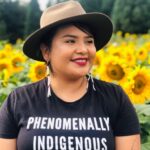 Earth Ambassador, Angela Noah, White Mountain Apache – The following was submitted to our Family Housing University of Oregon’s Newsletter: “Angela’s Earth Day Project: Our world is becoming increasingly disconnected from our environment due to social distancing. But now more than ever, we need that connection. That’s why CA Angela will be leading an Earth Day project this April, to help promote personal healing through reconnecting with nature. If you’d like to take part in a community Earth Day project, tune into our April 17th, Zoom meeting/brainstorming session.” This project will be held for the Family Housing Spencer View graduate families and students. Following the week, a project will be implemented chosen by residents from the April 17th Zoom meeting.
Earth Ambassador, Angela Noah, White Mountain Apache – The following was submitted to our Family Housing University of Oregon’s Newsletter: “Angela’s Earth Day Project: Our world is becoming increasingly disconnected from our environment due to social distancing. But now more than ever, we need that connection. That’s why CA Angela will be leading an Earth Day project this April, to help promote personal healing through reconnecting with nature. If you’d like to take part in a community Earth Day project, tune into our April 17th, Zoom meeting/brainstorming session.” This project will be held for the Family Housing Spencer View graduate families and students. Following the week, a project will be implemented chosen by residents from the April 17th Zoom meeting.
 UNITY Program Coordinator/Office Manager, Tami Patterson – My Earth Day pledge is to adapt a Zero Waste lifestyle. A big change for me is reducing waste from packaging, by minimizing eating out and buying groceries with recyclable packaging. My plan is to prepare my own food and beverages. When I think of all the plastic cups from my favorite coffee place, I am sure they would stack up higher than my house. When I eat out, I choose restaurants that serve food with real plates, cups and silverware.
UNITY Program Coordinator/Office Manager, Tami Patterson – My Earth Day pledge is to adapt a Zero Waste lifestyle. A big change for me is reducing waste from packaging, by minimizing eating out and buying groceries with recyclable packaging. My plan is to prepare my own food and beverages. When I think of all the plastic cups from my favorite coffee place, I am sure they would stack up higher than my house. When I eat out, I choose restaurants that serve food with real plates, cups and silverware.
